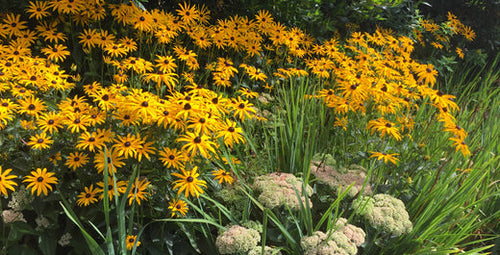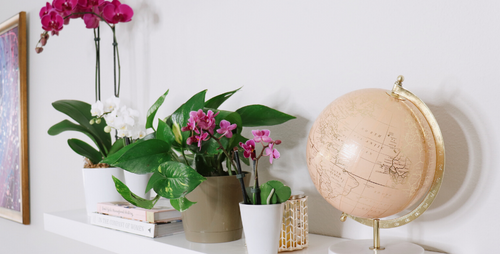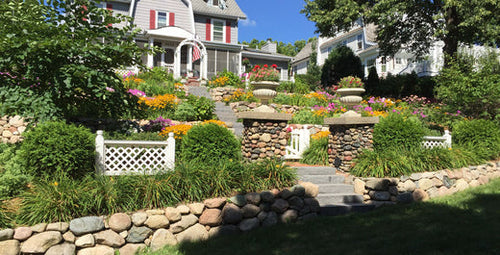Pansies are the cheerleaders of the cool-season garden. Their happy flowers provide a big boost of color to beds, borders, and containers. Pansies look great en masse or teamed with other spring or fall bloomers.
Pansy Flower Types
Pansies come in two basic flower types: blotched (the ones that look like little faces) and solid colored. These colorful characters offer a gorgeous choice of hues from boldly bright to softly pastel. Look for blooms in white, blue, purple, pink, yellow, red, orange, and bi-colors.
Flower size varies depending on variety. Some pansies develop blooms that measure two inches across while others are a diminutive half-inch in diameter. Most pansies have an upright appearance; they stand perkily at attention. But some newer varieties have a creeping habit, making them ideal for window boxes or tall containers where they can cascade with abandon over the edge.
Selecting Pansies
When shopping for pansies, look for plants with sturdy stems and bright green leaves. Don’t buy wilted plants or those with yellowing foliage. Because pansies are small in stature, always buy more than you think you’ll need. (Because nothing looks sadder than a flower garden with pansies in a long, lonely row.) For best effect, space pansies 6 inches apart in all directions. Planted close together, they’ll fill in quickly, creating a beautiful carpet of bloom. Pansies are tolerant of different light conditions, but most do best in a sunny to partially sunny location with well-drained, slightly moist soil.
Pansies Through the Seasons
Pansies are cool-weather flowers, and they excel in gardens in the spring and fall.
In warmer climates, use pansies as bedding plants to replace summer flowers such as petunias. In these regions, pansies provide color all winter long. Remove them in the spring when the temperatures rise to make way for other annuals. Heat is the number one enemy of pansies.
In colder climates, pansies add color to autumn gardens and then die back in the winter. Cool Wave Pansies, for example, is a new, exciting variety that has been developed to survive through the winter in even the coldest climates. Plus, these hardy beauties come in a wide range of bold colors.
But come spring, some pansy varieties will pop back up again and bloom beautifully alongside spring-flowering bulbs such as tulips and daffodils. Refer to the plant label to be sure the variety you chose is tough enough to survive the winter. Or just enjoy your fall pansies and plant new ones in the spring.
Perky, cheery, and easy to grow, pansies are a fast and inexpensive way to spread color throughout your spring and fall garden.
Discover more annual flowers that can take the cold!
See our cool-season container gardening ideas.
Pansy Flower Types
Pansies come in two basic flower types: blotched (the ones that look like little faces) and solid colored. These colorful characters offer a gorgeous choice of hues from boldly bright to softly pastel. Look for blooms in white, blue, purple, pink, yellow, red, orange, and bi-colors.
Flower size varies depending on variety. Some pansies develop blooms that measure two inches across while others are a diminutive half-inch in diameter. Most pansies have an upright appearance; they stand perkily at attention. But some newer varieties have a creeping habit, making them ideal for window boxes or tall containers where they can cascade with abandon over the edge.
Selecting Pansies
When shopping for pansies, look for plants with sturdy stems and bright green leaves. Don’t buy wilted plants or those with yellowing foliage. Because pansies are small in stature, always buy more than you think you’ll need. (Because nothing looks sadder than a flower garden with pansies in a long, lonely row.) For best effect, space pansies 6 inches apart in all directions. Planted close together, they’ll fill in quickly, creating a beautiful carpet of bloom. Pansies are tolerant of different light conditions, but most do best in a sunny to partially sunny location with well-drained, slightly moist soil.
Pansies Through the Seasons
Pansies are cool-weather flowers, and they excel in gardens in the spring and fall.
In warmer climates, use pansies as bedding plants to replace summer flowers such as petunias. In these regions, pansies provide color all winter long. Remove them in the spring when the temperatures rise to make way for other annuals. Heat is the number one enemy of pansies.
In colder climates, pansies add color to autumn gardens and then die back in the winter. Cool Wave Pansies, for example, is a new, exciting variety that has been developed to survive through the winter in even the coldest climates. Plus, these hardy beauties come in a wide range of bold colors.
But come spring, some pansy varieties will pop back up again and bloom beautifully alongside spring-flowering bulbs such as tulips and daffodils. Refer to the plant label to be sure the variety you chose is tough enough to survive the winter. Or just enjoy your fall pansies and plant new ones in the spring.
Perky, cheery, and easy to grow, pansies are a fast and inexpensive way to spread color throughout your spring and fall garden.
Discover more annual flowers that can take the cold!
See our cool-season container gardening ideas.
Written by Doug Jimerson

















